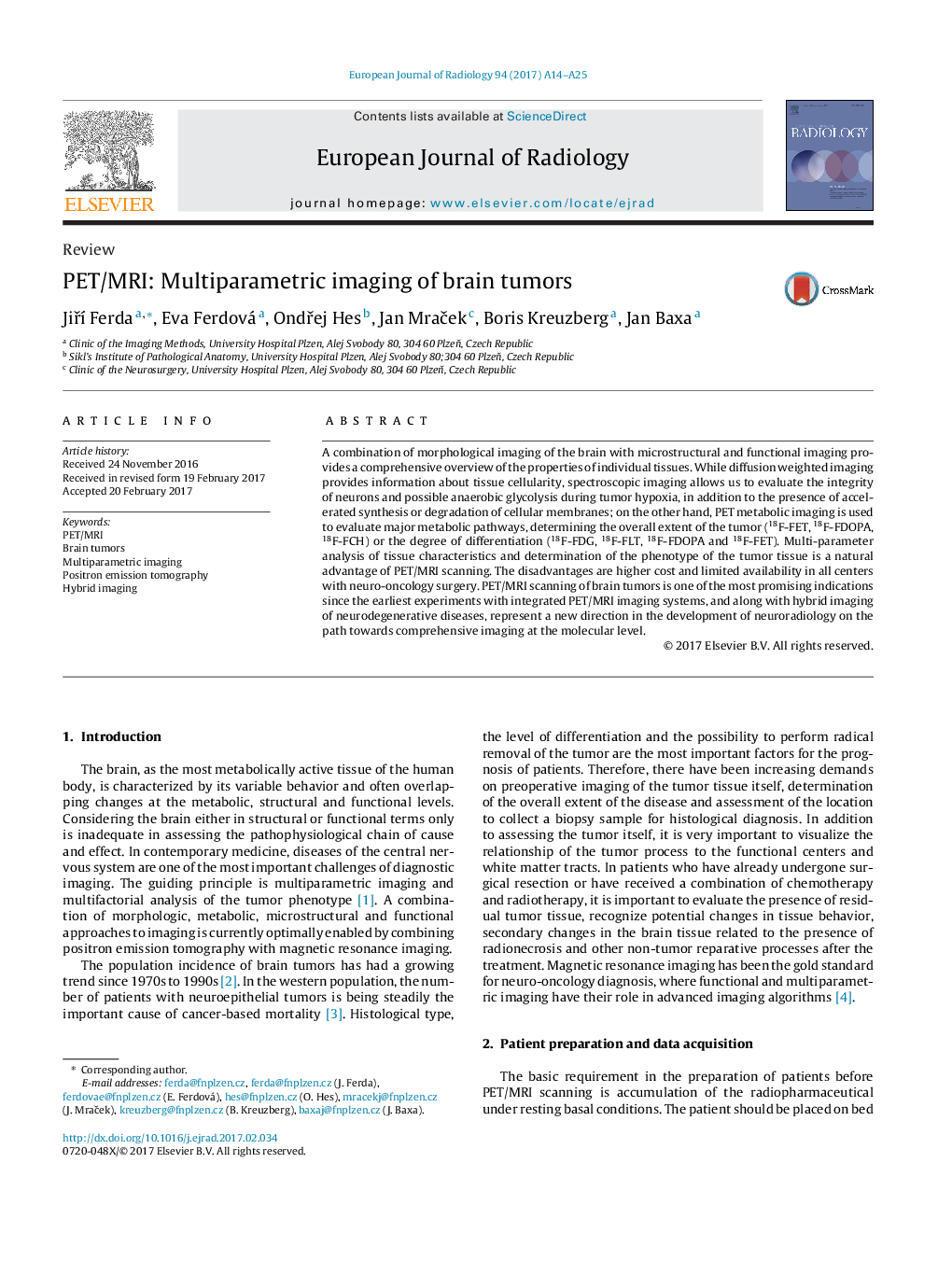| Article ID | Journal | Published Year | Pages | File Type |
|---|---|---|---|---|
| 5726278 | European Journal of Radiology | 2017 | 12 Pages |
â¢A combination of morphological imaging of the brain with microstructural and functional imaging provides a comprehensive overview of the properties of individual tissues.â¢PET metabolic imaging is used to evaluate major metabolic pathways, determining the overall extent of the tumor (18F-FET, 18F-FDOPA, 18F-FCH) or the degree of differentiation (18F-FDG, 18F-FLT, 18F-FDOPA and 18F-FET).â¢Multi-parameter analysis of tissue characteristics and determination of the phenotype of the tumor tissue is a natural advantage of PET/MRI scanning.â¢The disadvantages are higher cost and limited availability in all centers with neuro-oncology surgery.â¢PET/MRI represent a new direction in the development of neuroradiology on the path towards comprehensive imaging at the molecular level.
A combination of morphological imaging of the brain with microstructural and functional imaging provides a comprehensive overview of the properties of individual tissues. While diffusion weighted imaging provides information about tissue cellularity, spectroscopic imaging allows us to evaluate the integrity of neurons and possible anaerobic glycolysis during tumor hypoxia, in addition to the presence of accelerated synthesis or degradation of cellular membranes; on the other hand, PET metabolic imaging is used to evaluate major metabolic pathways, determining the overall extent of the tumor (18F-FET, 18F-FDOPA, 18F-FCH) or the degree of differentiation (18F-FDG, 18F-FLT, 18F-FDOPA and 18F-FET). Multi-parameter analysis of tissue characteristics and determination of the phenotype of the tumor tissue is a natural advantage of PET/MRI scanning. The disadvantages are higher cost and limited availability in all centers with neuro-oncology surgery. PET/MRI scanning of brain tumors is one of the most promising indications since the earliest experiments with integrated PET/MRI imaging systems, and along with hybrid imaging of neurodegenerative diseases, represent a new direction in the development of neuroradiology on the path towards comprehensive imaging at the molecular level.
